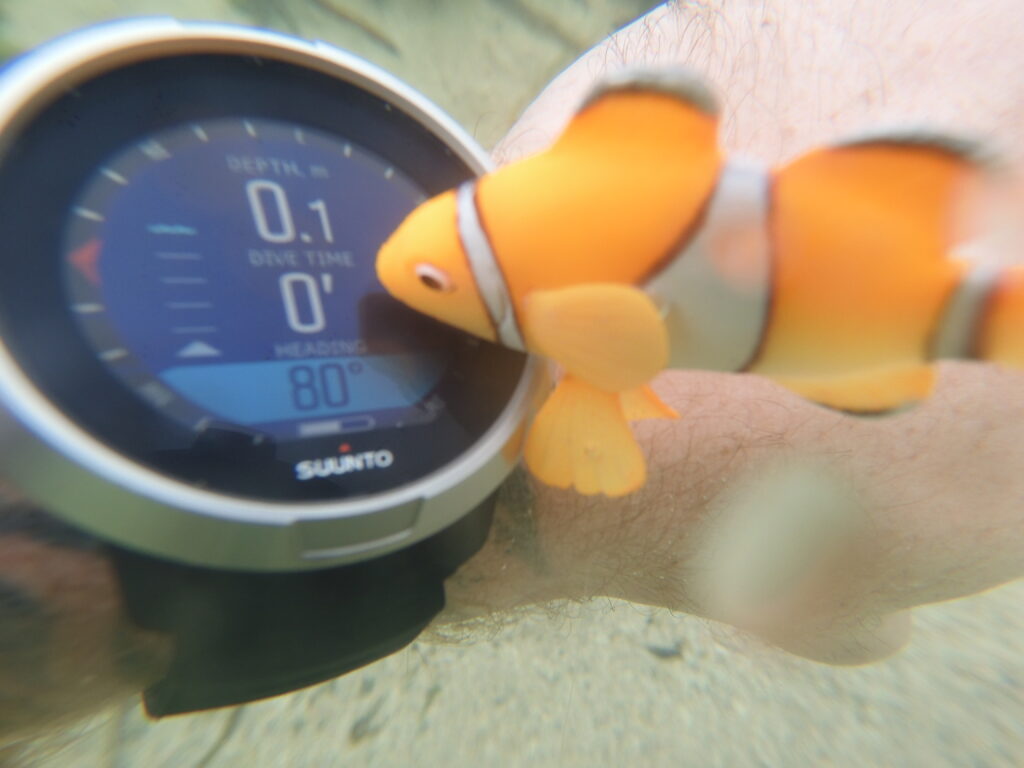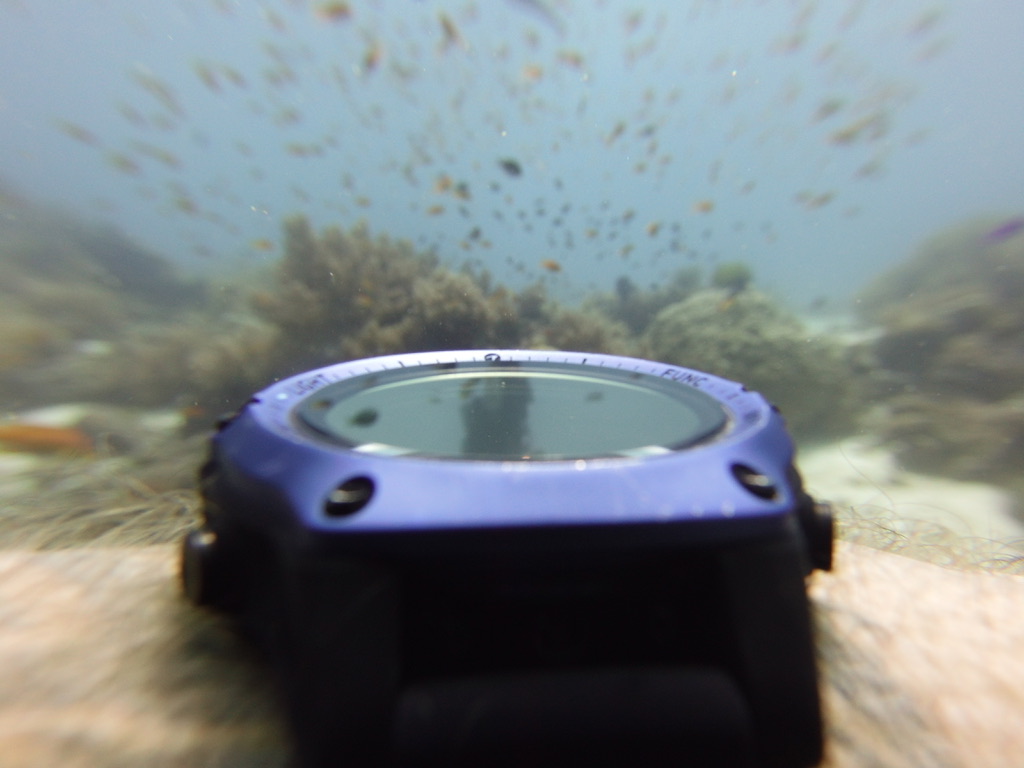
I still remember buying my first dive computer – and how it instantly transformed the way I dived!
Having real-time access to my depth, bottom time and no-decompression limit (NDL) gave me a whole new level of awareness and control underwater!!
Whether you’re looking to buy your very first dive computer or upgrade to something more advanced, finding the best dive computer for your needs is one of the smartest things you can do as a diver.
Over the years, I’ve used a whole bunch of different dive computers. I started with a basic entry-level model and gradually upgraded to more advanced, professional-grade devices as my diving progressed.
On this page, you’ll find in-depth reviews of the best dive computers I’ve used across all price ranges along with those tested by other members of the Diving Squad crew!
Quick Look:
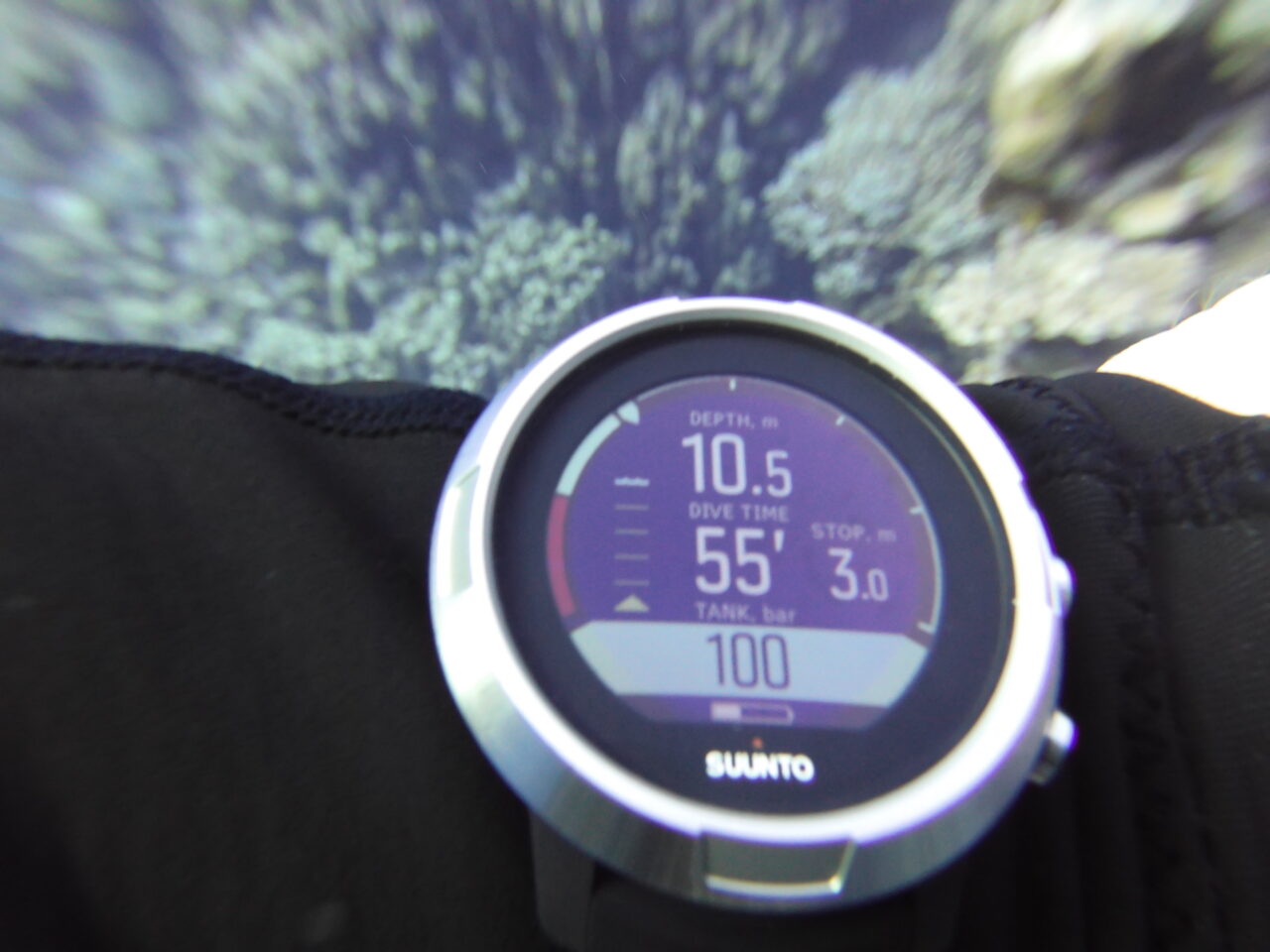
1) Best Value for Money: Suunto D5
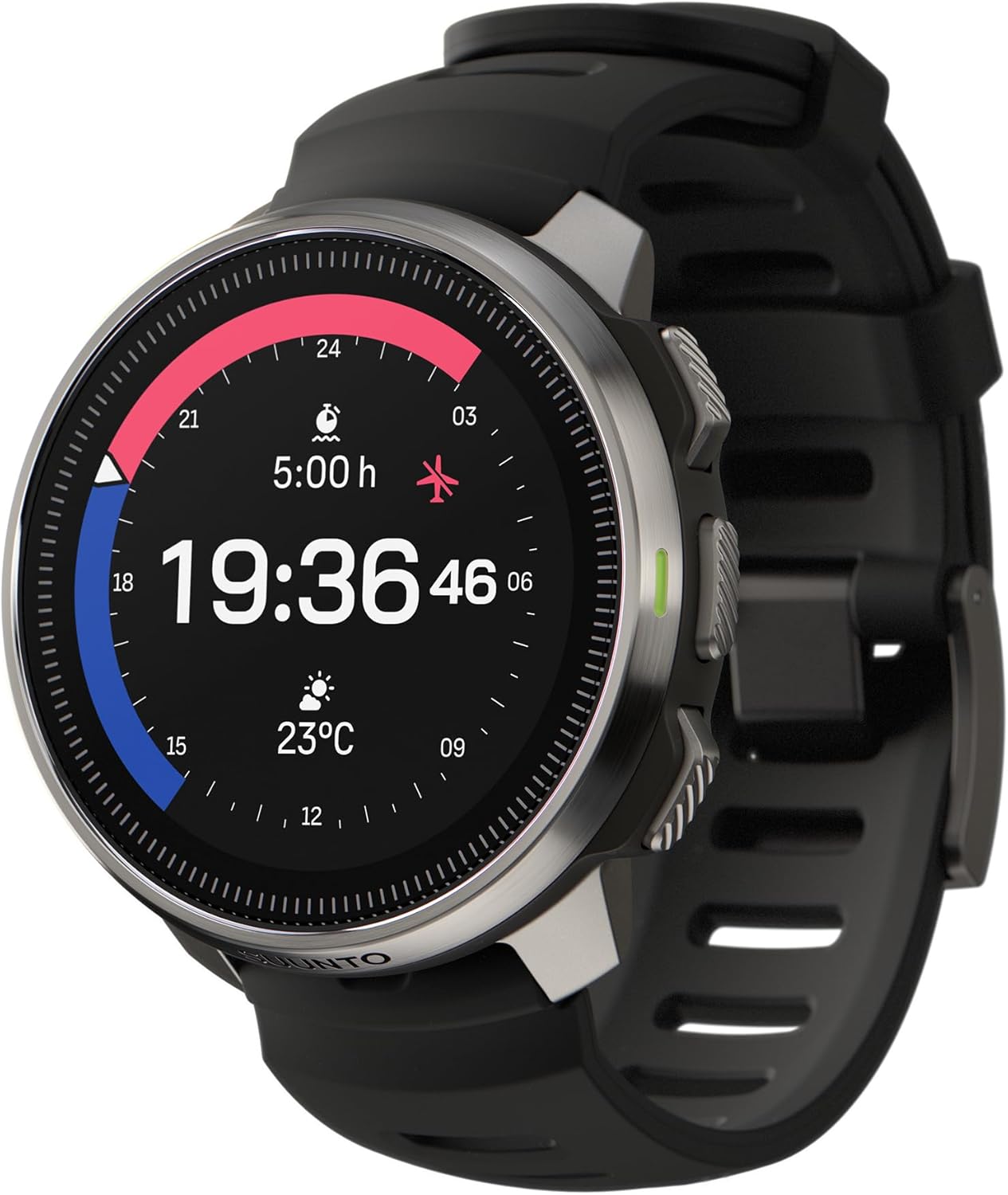
2) Hottest New Model: Suunto Ocean
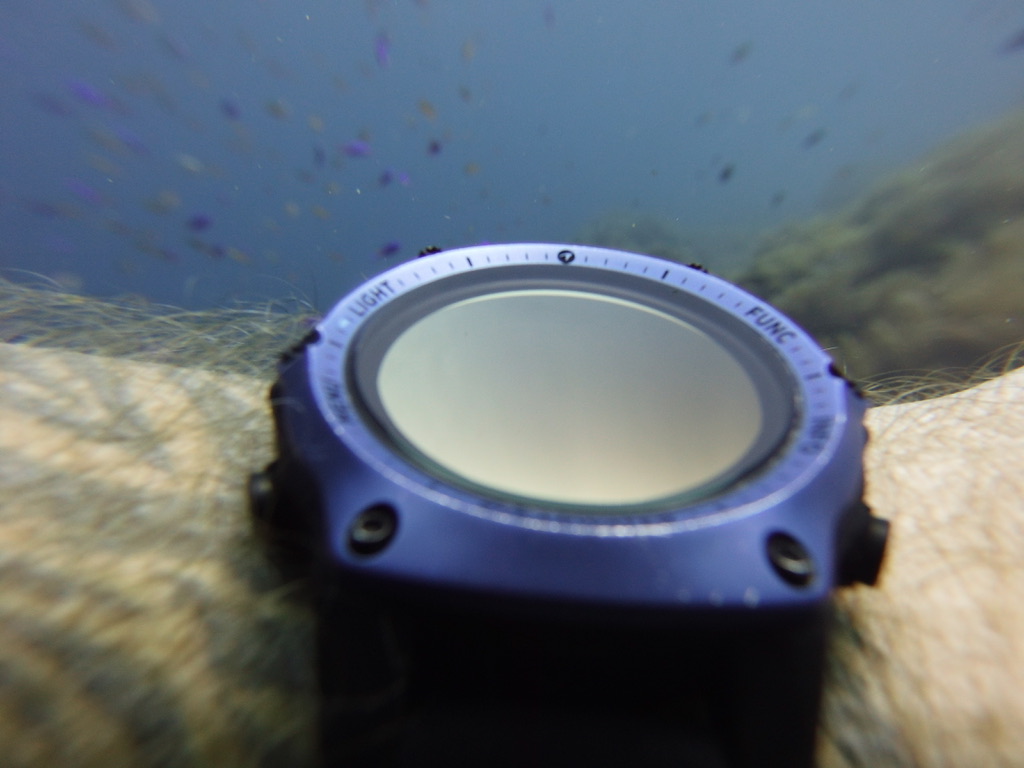
3) My TOP PICK: Shearwater Teric

4) Best SmartWatch Dive Computer: Garmin Descent MK3i
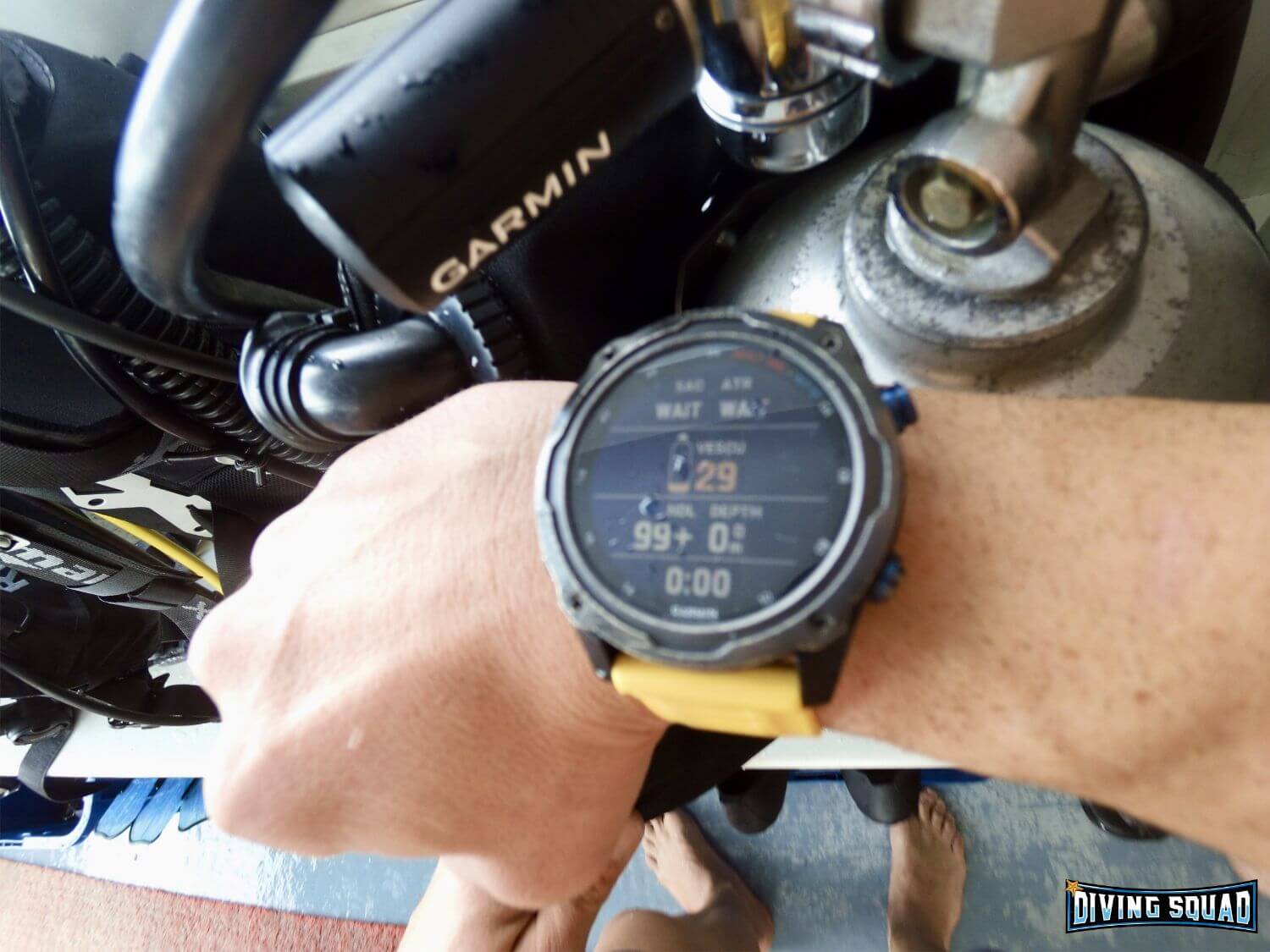
5)Cheaper SmartWatch Option: Garmin Descent MK2i
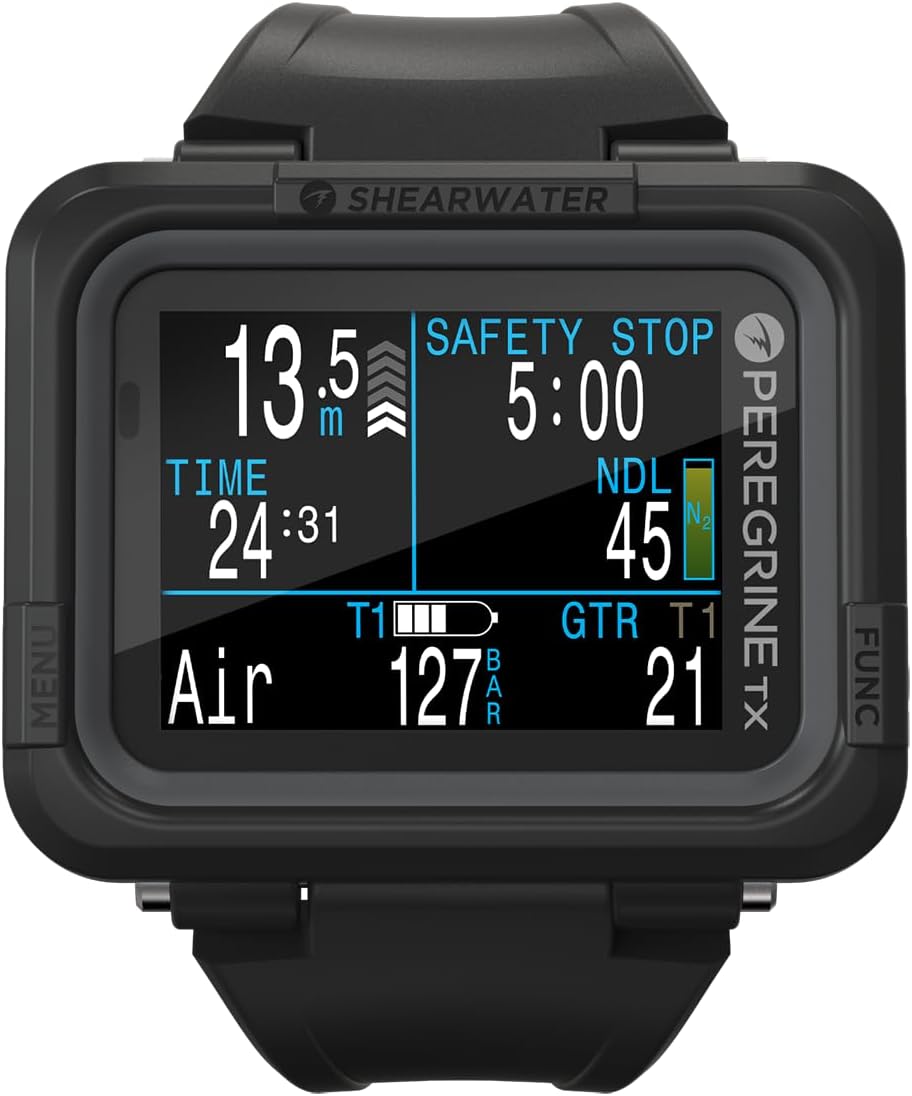
6) Rectangular Dive Computer: Shearwater Peregrine TX
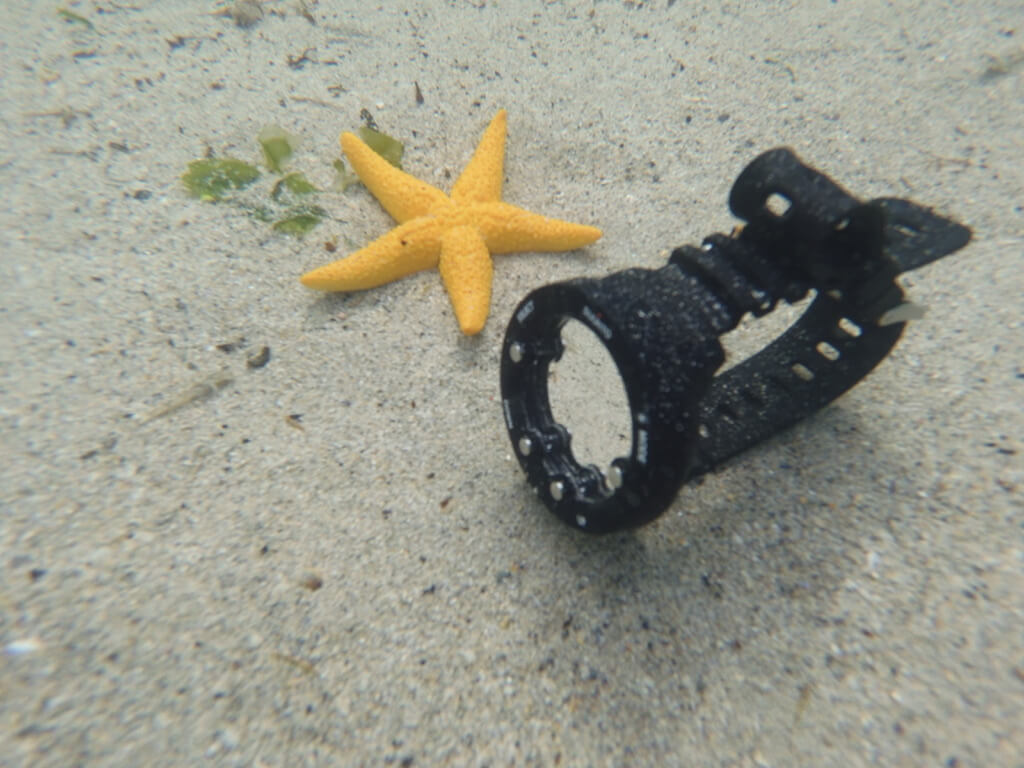
7) Best Budget Dive Computer: Suunto Zoop Novo
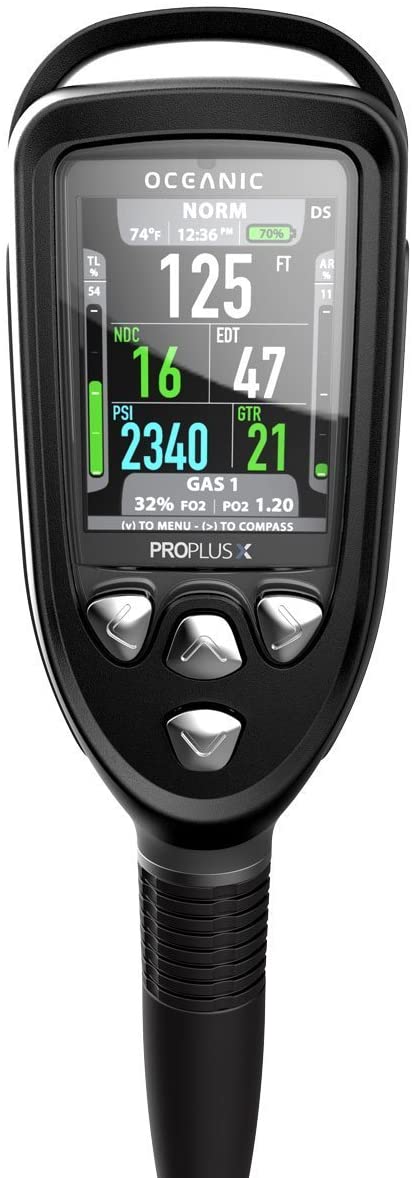
8) Best Console Dive Computer: Oceanic Pro Plus X

9) Cheapest Dive Computer: Cressi Leonardo

10) Enter Apple: Apple Watch Ultra 2
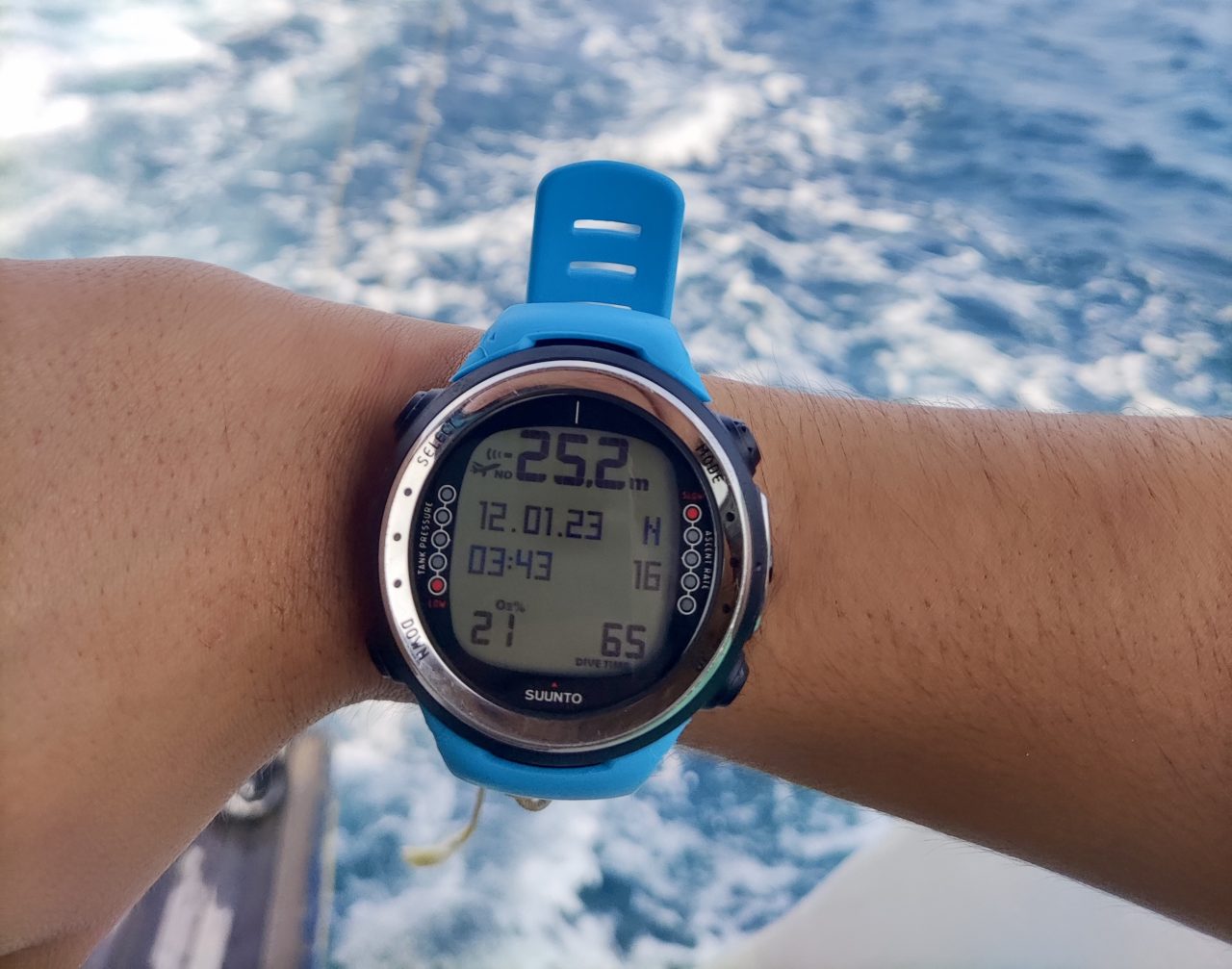
11) Mid-Priced Watch Sized: Suunto D4I
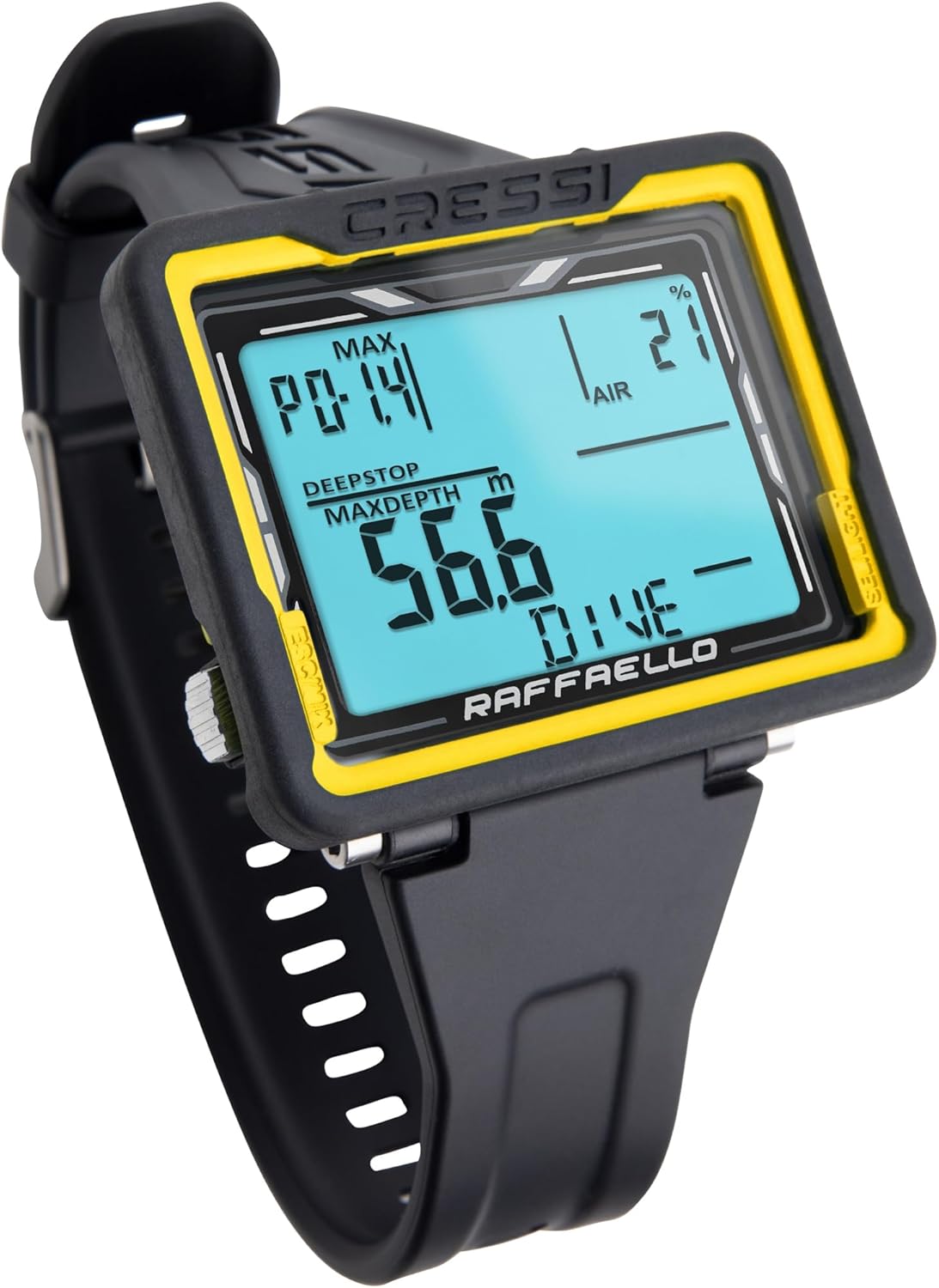
12) Cheap Rectangular: Cressi Raffaello
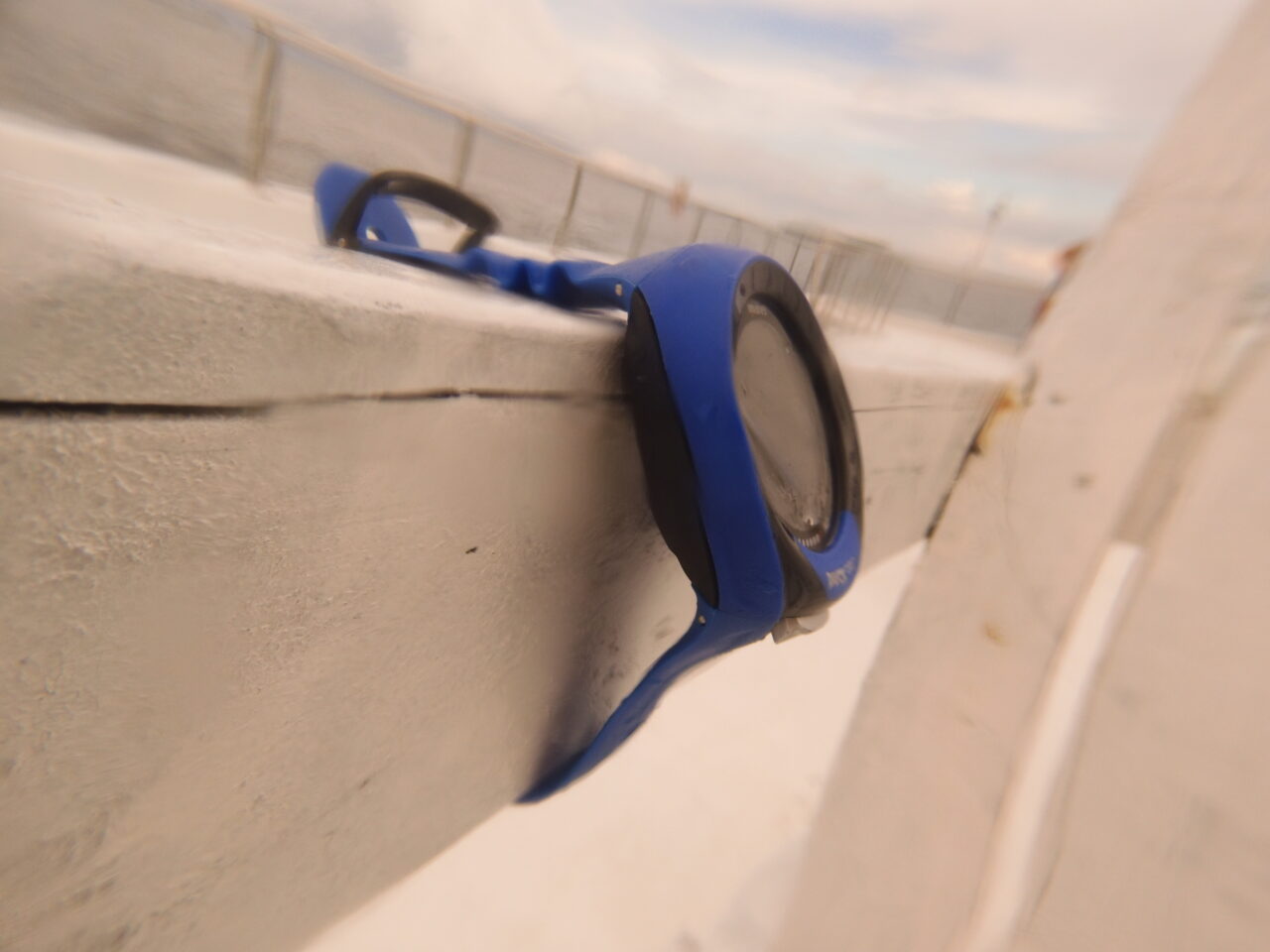
13) Second Cheapest Dive Computer: Mares Puck Pro
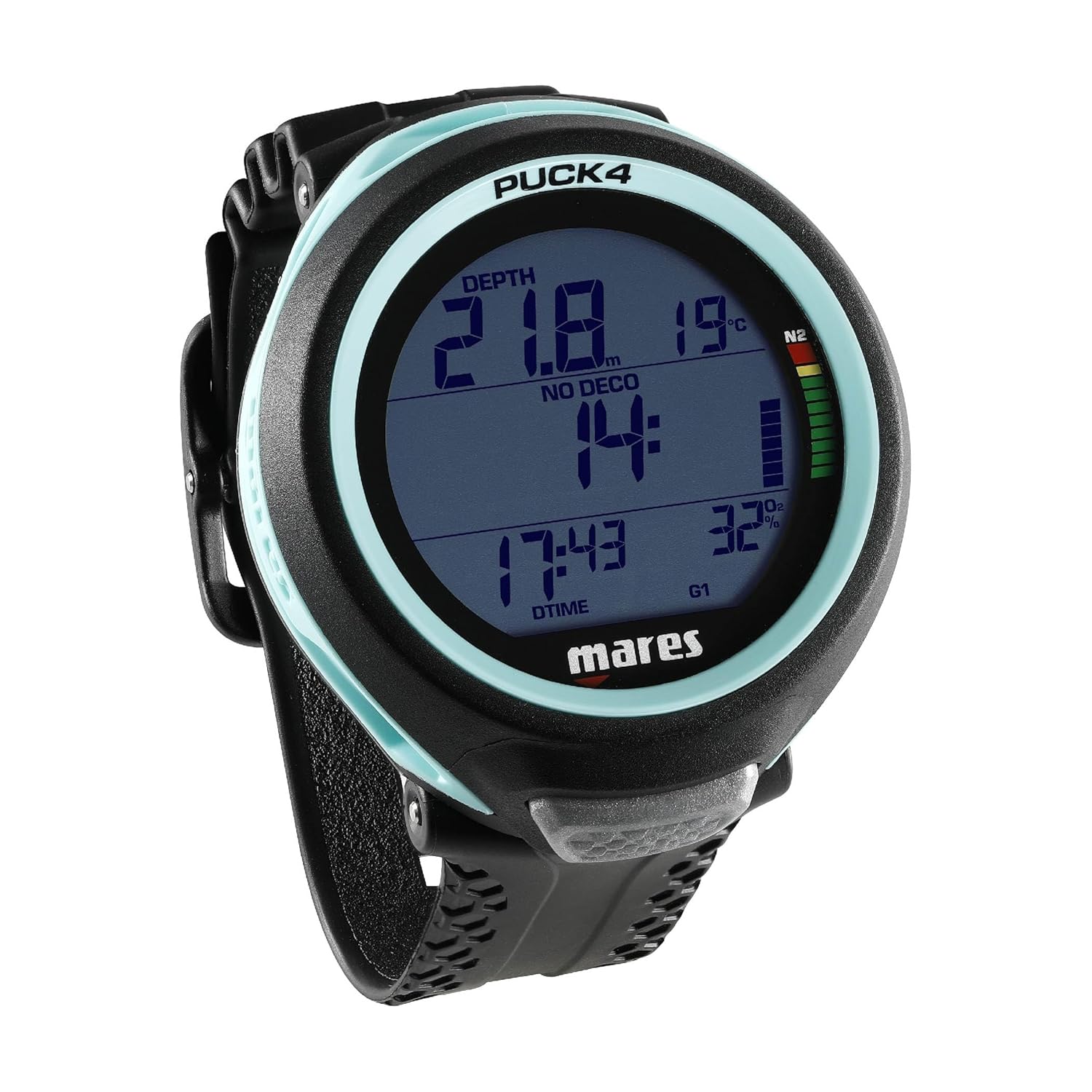
14) Puck Pro Upgrade: Mares Puck 4
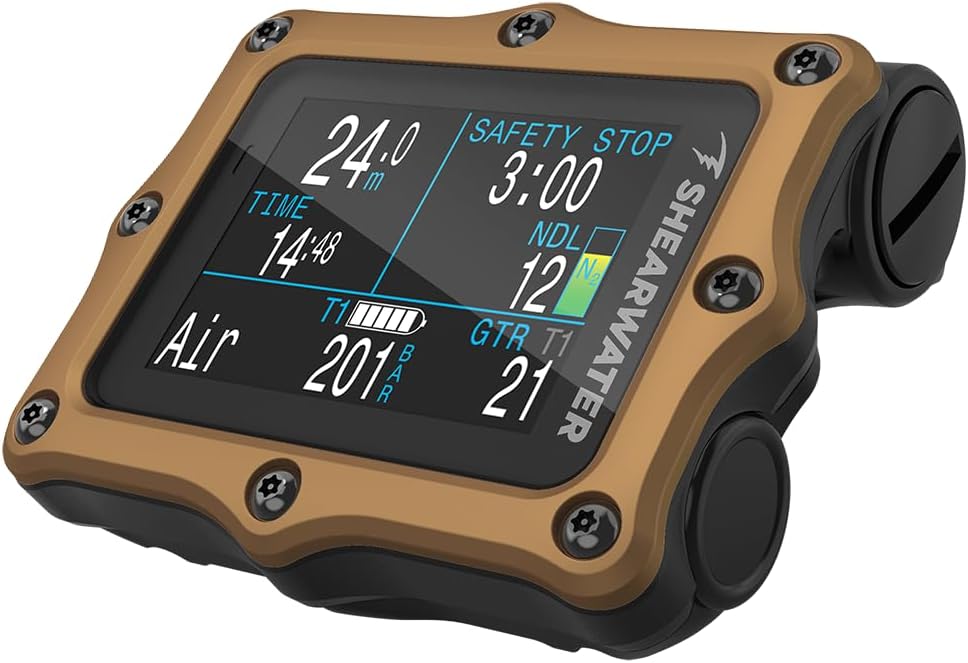
15) Tec Dive Computer: Shearwater Perdix 2
How do Cheap Dive Computers Differ from More Expensive Ones?
Entry-level dive computers are the most affordable: typically they have bulky designs and basic dot-matrix displays. While they offer fewer features, they do exactly what they’re meant to: track your dive profile, help you stay within NDL limits, and guide your safety stop.
As you move up in price, dive computers not only look sleeker — with full-colour displays and modern designs — but they also start having advanced features like air integration, digital compasses, customizable dive algorithms and even smartwatch functionality!
REVIEWS: 15 Best Dive Computers of 2025
1) Best All-Rounder: Suunto D5
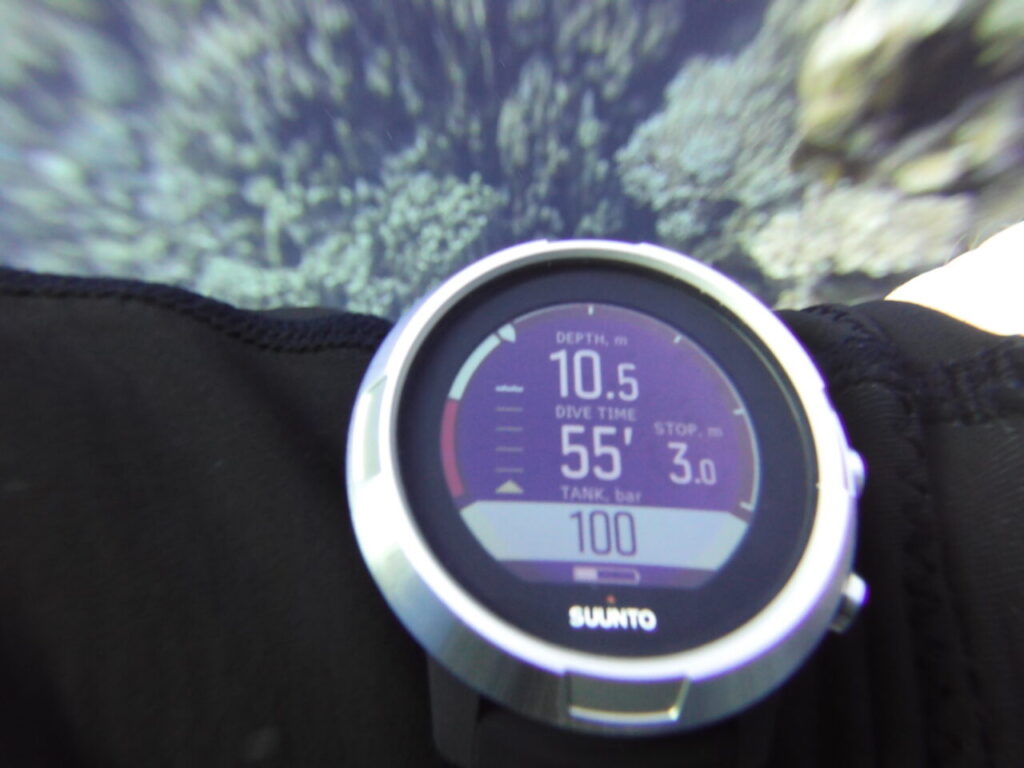
- Price:> $$ Awesome Value for Money
- Full Colour LED Display
- Air Integration
- Digital Compass
- Air, Nitrox, Free Dive & Off Modes
- Rechargeable Battery (7 – 12 Hours)
- 200 Hour Logbook
With it’s stylish metal bezel, beautiful full colour LED display with high contrast and intuitive user-interface, the rechargeable Suunto D5 is one of the best dive computers I’ve ever had!
This is a great choice for both beginners and experienced divers alike: it’s easy to use and is lower mid-price yet packed with awesome features like an adjustable algorithm, air integration, digital compass and customisable display.
You may be wondering why such a great dive computer is so affordable: until mid-2024 the Suunto D5 was actually much more expensive; but in the last year it’s price has been dramatically reduced due to a slightly updated model being released: the Suunto Ocean (which we discuss next!).
When I bought my Suunto D5 years ago I was delighted with it; since then it’s so much cheaper and to be honest the value for money that it offers is now shockingly good.
2) Hottest New Dive Computer: Suunto Ocean
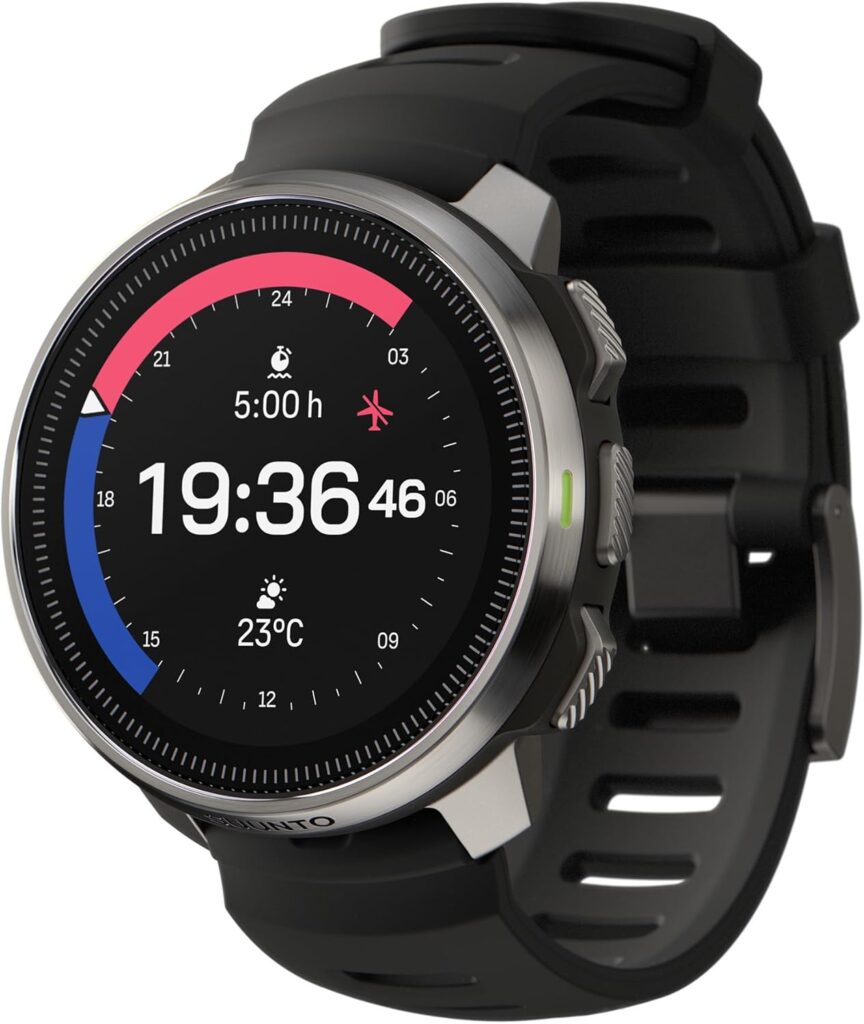
- Newer Version of the Suunto D5
- Longer Battery Life (60 Hours Dive Mode)
- AMOLED Display = Brighter & Crisper
- Smartwatch Features!appl
The Suunto Ocean is Suunto’s latest flagship dive computer – and it’s an absolute powerhouse. Building on the success of the D5, it adds more advanced dive features and full smartwatch functionality, making it a true crossover device for serious divers and everyday adventurers alike.
The standout upgrade is the new AMOLED display: larger, brighter, and more vivid than the D5’s LED screen, it offers exceptional clarity even in challenging conditions. Navigation is smoother thanks to faster processing and a streamlined user interface, while the physical design maintains Suunto’s premium feel in a slimmer, more modern profile.
Feature-wise, the Ocean takes a major leap forward. Alongside air integration, a digital compass, and adjustable decompression algorithms, it supports multiple dive modes—including scuba, freediving, and technical diving with trimix—making it far more versatile than its predecessor.
Outside the water, it functions as a high-performance fitness smartwatch, with heart rate monitoring, built-in GPS, sleep tracking, and over 95 sport modes. It’s a device designed not just for diving, but for everyday wear and training.
Battery life is another big win. Unlike the D5, which requires frequent charging, the Ocean delivers greatly extended runtime—including up to 60 hours in dive mode—ideal for longer trips and expeditions.
Where to Buy Suunto Ocean:
3) My TOP PICK: Shearwater Teric

- Vivid, full-colour AMOLED Display (Highly Customisable)
- Suitable for Recreational and Tec Diving
- Air Integration, Digital Compass & Adjustable Algorithm
- Beautiful & Durable Design
- Highly Intuitive User Interface
I’ve used a load of dive computers over the years, but the Shearwater Teric is easily my favourite! It’s the best-looking, highest-performing model I’ve owned—packed with powerful features and a stunning AMOLED display that’s fully customisable, right down to layout, colours, brightness, and font size.
It offers adjustable algorithm conservatism (with no lockout if you skip a safety stop), air integration, and a tilt-compensated compass. It’s also fully tec-ready, with support for air, nitrox, trimix, and open-circuit modes, plus a 201m (600 ft) depth rating.
Battery life is solid—up to 30 hours in dive mode and 50 in watch mode—charged wirelessly via the included USB-C dock. With a sleek stainless bezel available in several colours, the Teric is as stylish as it is capable.
Where to Buy Shearwater Teric:
4) Best SmartWatch Dive Computer: Garmin Descent MK3i
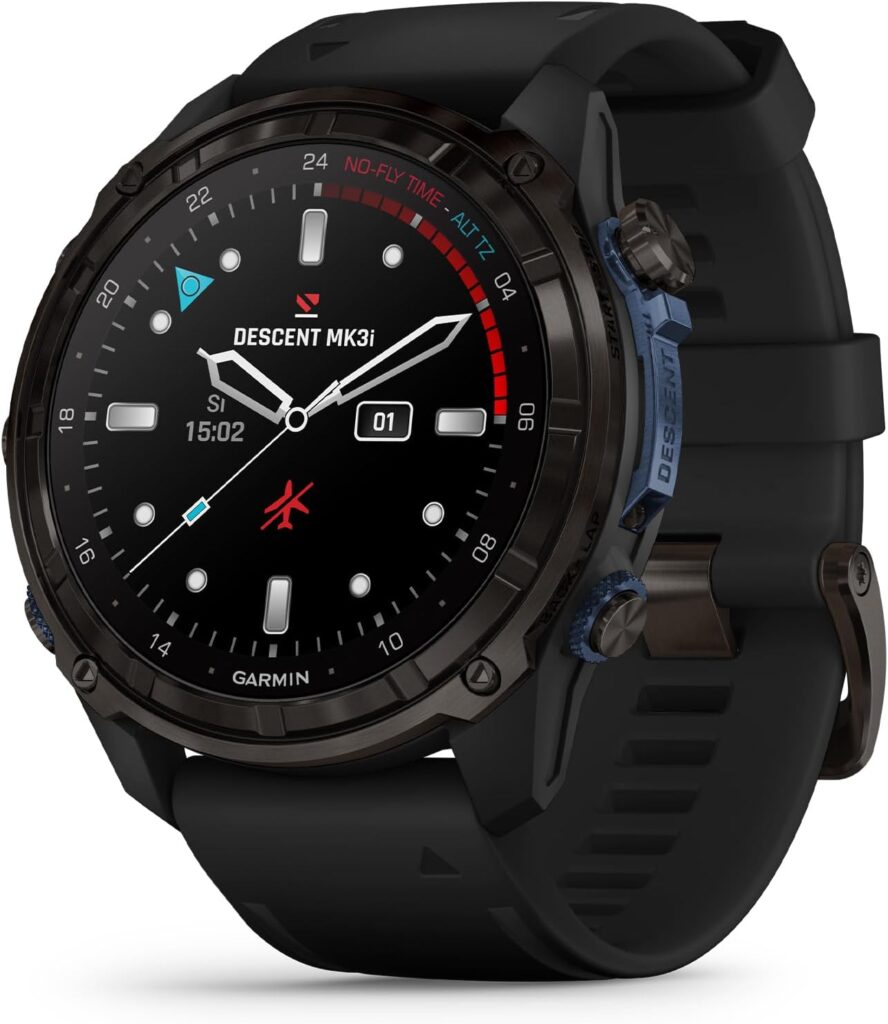
Released in November 2023, the Garmin Descent Mk3i builds upon the success of the critically acclaimed Mk2i with significant upgrades that make it more powerful both as a dive computer and a smartwatch!
There’s expanded health and fitness tracking, including improved heart rate, Pulse Ox, and HRV monitoring for more accurate insights. It even has a unique Dive Readiness Score, which uses sleep, stress, and training data to help assess if you’re physically prepared for diving!
Voice assistant support via your connected phone allows hands-free control, while onboard music storage, endless apps, Garmin Pay, and smart notifications make this baby insanely useful in every day life!
As a dive computer, it supports air, Nitrox, Trimix, and CCR dives with up to 11 gas mixes and includes freedive and gauge modes. Theres a digital compass, air integration tech and you can adjust the Bühlmann algorithm’s conservatism to make it more or less conservative – noice!
The Garmin Descent Mk2i is also one beautiful looking wrist-piece in literally any setting- it features a vibrant AMOLED display protected by sapphire crystal and a rugged design rated to 200 m depth. The outer case and bezel are constructed from titanium which is incredibly durable and highly scratch-proof whilst undeniably making it look extremely cool!
Where to Buy Garmin Descent Mk2i
5) Cheaper Smartwatch Dive Computer:Garmin Descent Mk2i
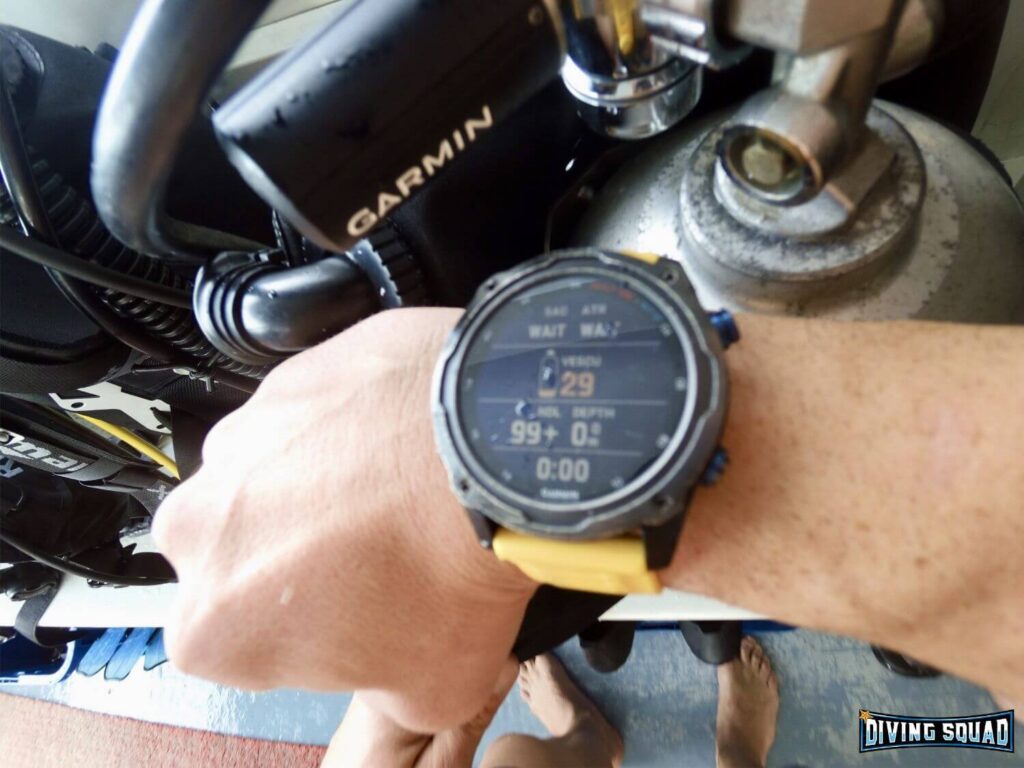
The Garmin Descent Mk2i is no longer the latest in Garmin flagship dive computer – that spot goes to the Mk3i – but it’s still a top-tier dive computer and it’s a few hundred bucks cheaper! You’re getting serious diving power at a better price, with air integration, multiple dive modes including trimix and CCR, GPS tracking, and a sleek, durable design.
It doesn’t feature some of the newer smartwatch tools like voice assistant support, jet lag advisor, or dive readiness score, and its health tracking isn’t quite as advanced as the Mk3i’s. But it’s still a solid smartwatch in its own right – offering music storage, contactless payments, notifications, heart rate monitoring, multi-sport tracking, and excellent connectivity with Garmin’s app.
With up to 80 hours of dive time and 16 days in smartwatch mode on a single charge, plus a crystal-clear display and rugged build, the Mk2i remains one of the most complete dive computers around. If you want a premium Garmin dive watch without splashing out on the Mk3i, this is still a superb choice.
Where to Buy Garmin Descent Mk2i:
6) Rectangular Dive Computer: Shearwater Peregrine TX

The Shearwater Peregrine TX has a distinctly different look and feel compared to most traditional dive computers. Instead of going for a round, watch-style shape like the Suunto D5 or Garmin Descent, it uses a rectangular body with softly rounded corners, giving it more of a compact diving instrument vibe than something you’d wear every day.
The big draw is its crisp, full-colour 2.2-inch screen that dominates the face of the device. This extra screen real estate means it can display multiple pieces of dive data—such as depth, time, no-deco limit, gas mix, compass and more—all at once in a super clear and legible way, without feeling cluttered.
Navigation is handled by two chunky buttons located on the front of the unit, which are intuitive and easy to use even with thick gloves. It comes with both a standard strap and optional bungee mounts. While the Peregrine TX isn’t trying to double as a daily smartwatch, what it offers instead is sheer underwater functionality and performance.
As a dive computer, it supports air, nitrox, and three-gas switching with customizable gradient factors, and features a full tilt-compensated 3D compass. It also includes air integration (a major upgrade from the original Peregrine), pairing with up to four transmitters. The menus are fast, clean, and easy to understand—true to Shearwater’s reputation for no-fuss usability!
Where to Buy Shearwater Peregrine TX:
7) Best Budget Dive Computer: Suunto Zoop Novo

The Suunto Zoop Novo was my first dive computer, and it served me incredibly well. One of the most affordable models out there, it’s easy to use and free from unnecessary extras.
Chunky and old-school, it has a large dot-matrix display that’s easy to read underwater—though too bulky to wear as a daily watch. Rugged and durable, it stores up to 140 dives and is rated to 262 feet—well beyond recreational limits. It’s available in several fun colours too.
The four-button interface is simple and beginner-friendly, making it easy to navigate settings. It supports air, nitrox, and freedive gauge modes, and uses the Suunto RGBM algorithm with adjustable conservatism (though you can’t make it less conservative like on higher-end models).
Powered by a lithium battery that lasts around 150 dives, it’s user-replaceable if you’ve got the know-how—or you can send it to a Suunto service centre for a quick fix.
Where to Buy Suunto Zoop Novo:
8) Best Console Dive Computer: Oceanic Pro Plus X
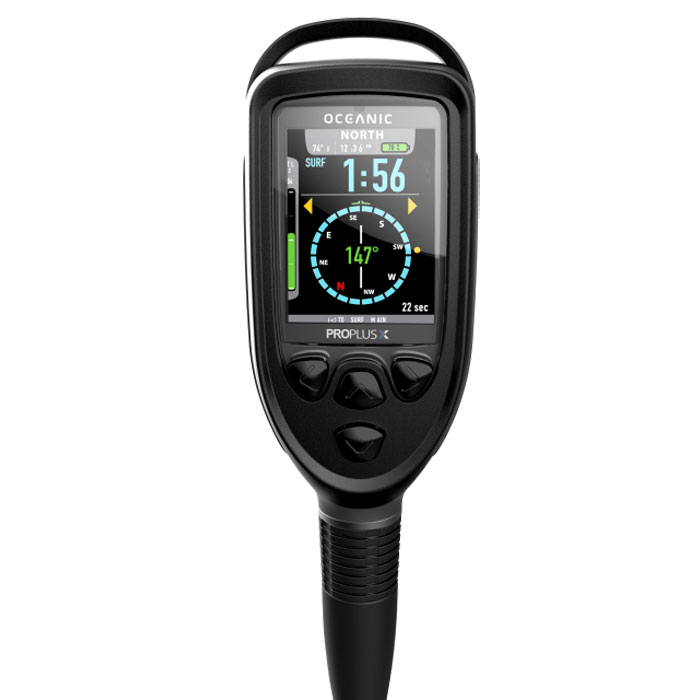
Whereas a normal dive computer is worn like a watch, a console dive computer is attached directly to your tank via a regulator hose in place of the pressure gauge.
One pro of this is a bigger display whereas another advantage is getting air integration without having to pay extra for a transmitter!
That’s exactly what the Oceanic Pro Plus X does – and its the absolute best console dive computer out there!
It’s display is a huge, thin-film LED transmitter. Data is displayed via an intuitive colour-coded system in massive, high-definition figures. You can adjust the brightness to sunlight or night conditions. The 3D compass looks especially huge and awesome!
The Oceanic Pro Plus X operates in air, nitrox and gauge modes and can be taken to a maximum depth of 330 feet; nearly three times the limit for recreational scuba diving.
Where to Buy Oceanic Pro Plus X:
9) Cheapest Dive Computer: Cressi Leonardo

The all-time cheapest dive computer is the Cressi Leonardo. It is simple and easy to use; having all the essential dive computer functions a recreational scuba diver needs and nothing more.
Following a chunky, old-school design, it has a huge dot-matrix display that is easy to read – but does make it rather cumbersome on your wrist meaning you probably wont want to use it as an everyday watch!
You operate it with just one button which makes the user interface extremely simple – albeit a little slow. Also, it is available in a whole range of vivid colours!
The lithium battery lasts for 150 dives before it has to be changed (which can easily be done by sending it to a Cressi service centre!). Also, the logbook which records dive profile data has a pretty decent capacity of 70 hours!
If you’ve rented a dive computer at a dive centre before; chances are high that it was a Cressi Leonardo! They’re mega cheap, durable and easy to use making them ideal for beginner scuba divers.
Where to Buy Cressi Leonardo:
10) Enter Apple: Apple Watch Ultra 2
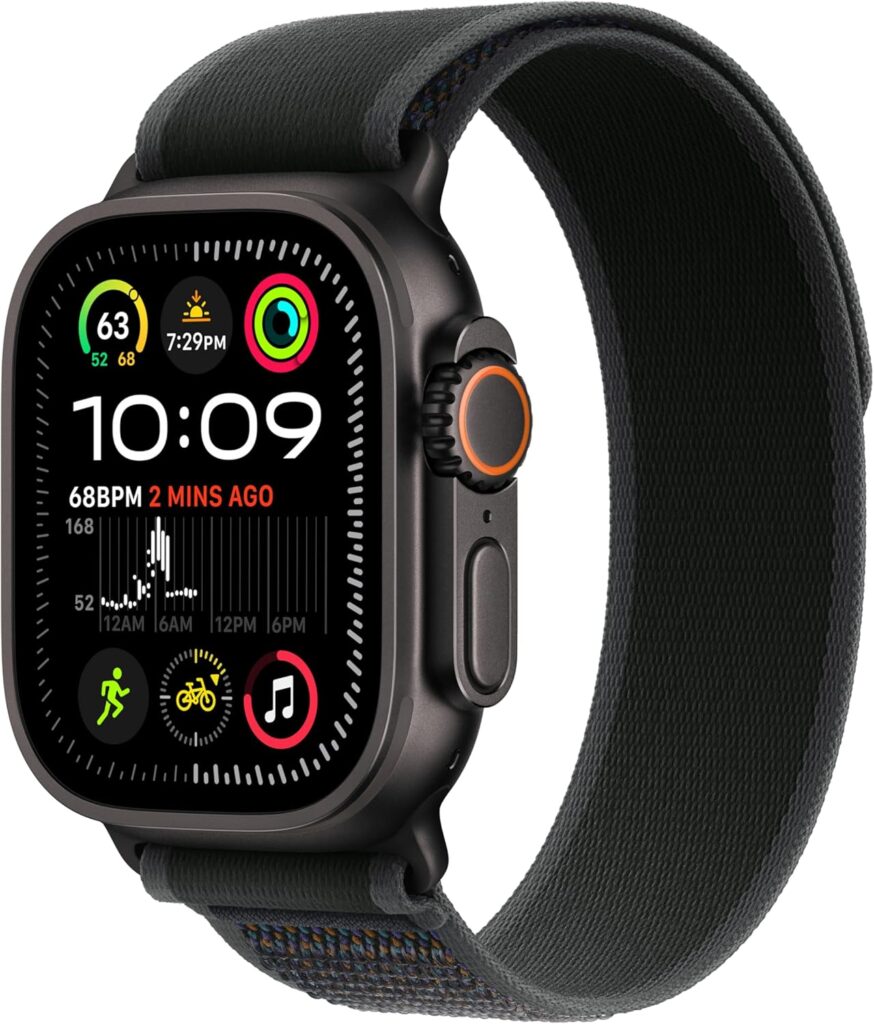
The Apple Watch Ultra 2 acts as a surprisingly capable entry-level dive computer when paired with the Oceanic+ app. It tracks depth, dive time, temperature, nitrox, and no-decompression limits, with a depth rating of 40m and EN13319 certification.
There’s a built-in compass, haptic depth alerts, and ascent rate monitoring – although you’ll need a subscription to unlock the app’s full dive functionality.
What really makes the Ultra 2 different is how much more it offers outside of diving. With an ultra-bright display, advanced GPS, fitness and health tracking, voice assistant, and seamless iPhone integration, it’s both a dive computer and one of the most powerful smartwatches available.
It’s not for technical divers or those needing multiple gas mixes, but for recreational divers who want a single device for both diving and everyday use, the Apple Watch Ultra 2 is a seriously versatile choice.
Where to Buy Apple Watch Ultra 2:
11) Mid-Priced Watch Sized: Suunto D4i Novo
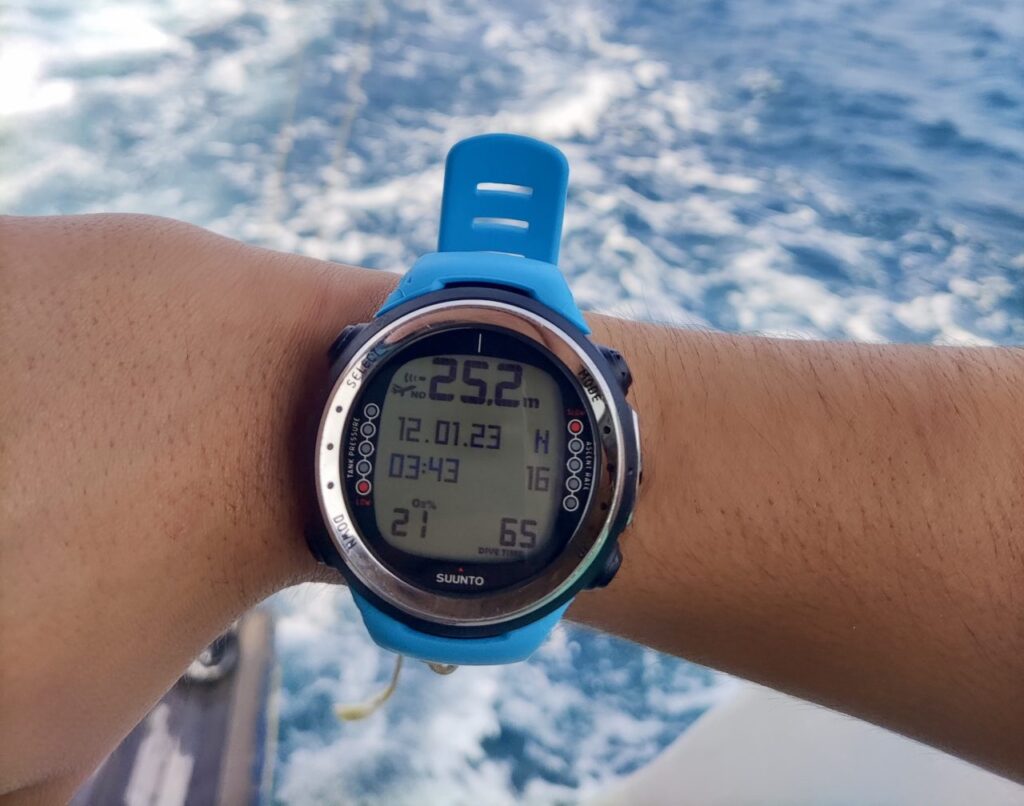
The Suunto D4i Novo is one of the cheapest watch-sized dive computers available, with a compact 48.6 mm diameter that’s smaller than some everyday watches. Sleek and minimalist, it’s among the most affordable dive computers on our list to offer air integration when paired with a separate Suunto Tank Pod.
It features a user-replaceable lithium battery lasting around 150 dives, stores up to 140 hours of dive logs, and comes in several colours. While it lacks Bluetooth and requires a USB cable to transfer data, that’s no deal-breaker.
The dot-matrix display with backlight is easy to read, though a colour screen would’ve been nice at this price point.
Controlled via four buttons, it’s quick to navigate once you’re familiar with the layout. Rated to 328 ft / 100 m, the D4i Novo is essentially a refined version of the original D4i — the only difference being upgraded metal buttons for improved durability!
Where to Buy Suunto D4i:
12)Cheap Rectangular Dive Computer: Cressi Raffaello
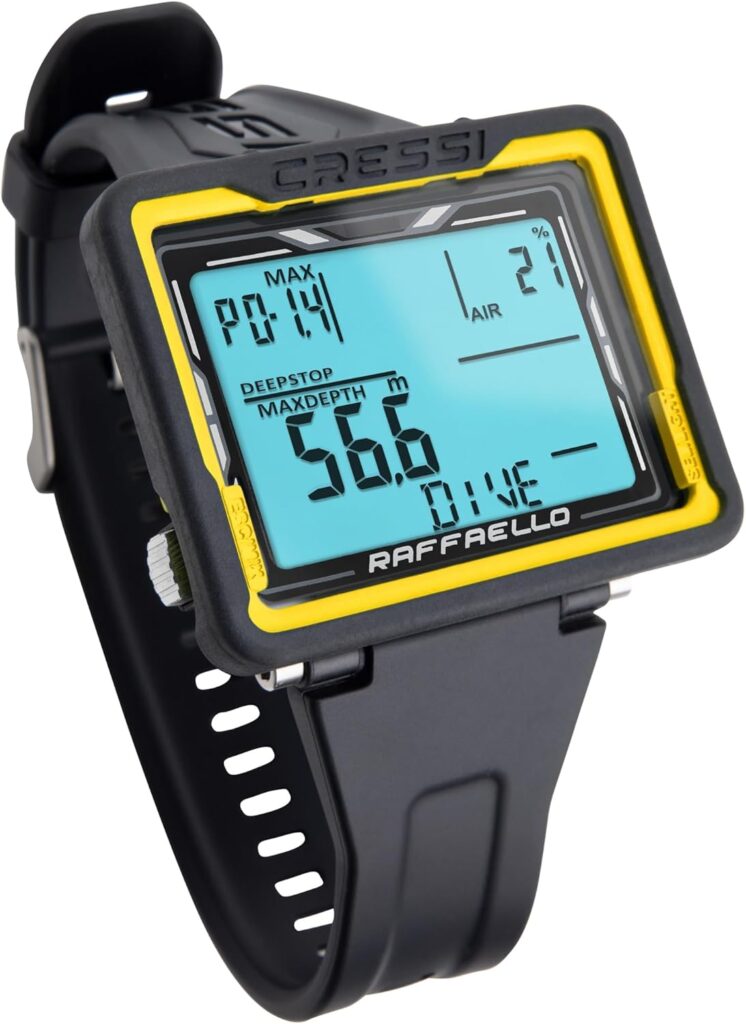
The Cressi Raffaello is a rectangular dive computer released in 2024, offering excellent screen clarity and simple usability at a lower price than most other rectangular models. Its wide display with bold digits makes underwater data easy to read, and the tough mineral glass screen resists scratches and fogging.
It supports Air, Nitrox, and Gauge modes, uses Cressi’s RGBM algorithm, and is operated via three intuitive buttons. While it doesn’t offer air integration or smart features, it syncs logs via Bluetooth and includes a rechargeable battery.
For divers who want a no-fuss, rugged and easy-to-read computer without spending big, the Raffaello is a solid pick!
Where to Buy Cressi Raffaello:
13) Second Cheapest Dive Computer: Mares Puck Pro
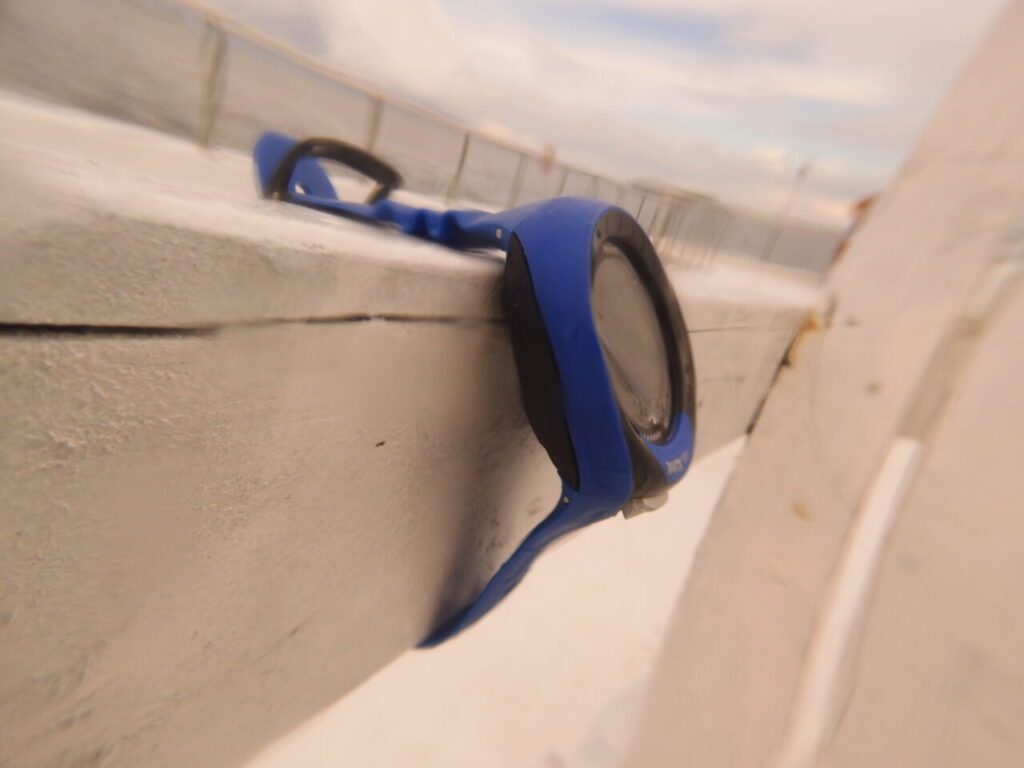
- Price: > $
- Air, Nitrox & Gauge Modes
- Dot-matrix display (medium-sized)
- Cr 2450 battery: lasts 400 dives
The Mares Puck Pro is the second-cheapest dive computer on the Diving Squad list, just after the Cressi Leonardo, and offers excellent value for beginner divers. With a large, easy-to-read backlit display and simple single-button operation, it’s user-friendly even with gloves.
It supports Air, Nitrox (up to 99%), and Gauge modes, using the Mares-Wienke RGBM algorithm, and stores up to around 30 dives with 5-second sampling.
It’s rated to 150 m and powered by a user-replaceable battery that lasts for 200–300 dives. While it lacks features like air integration, Bluetooth, or a compass, it’s a rugged, reliable option for recreational use.
Its only drawback is a conservative algorithm, but for the price, it’s one of the best no-frills computers available.
Where to Buy Mares Puck Pro:
There’s also a newer version: the Mares Puck 4 — which we’ve reviewed next!
14) Puck Pro Upgrade: Mares Puck 4
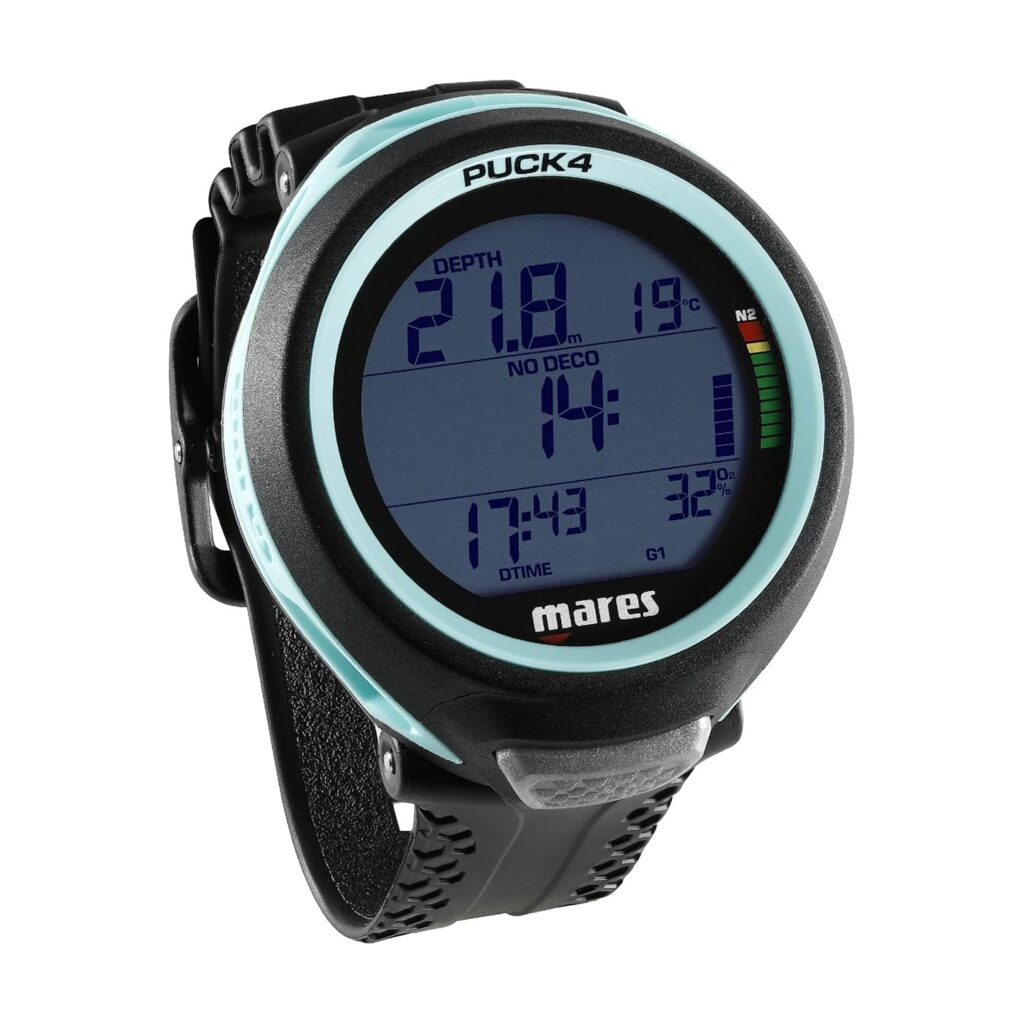
The Mares Puck 4 is a slightly more expensive upgrade to the popular Puck Pro, but it brings a range of useful improvements while keeping the same tough, easy-to-use design!
It still features the familiar oversized screen and single-button navigation, but now includes Bluetooth connectivity for quick log transfers to your phone without needing a separate cable or clip.
A major upgrade is the switch to the Bühlmann ZH-L16C algorithm with adjustable gradient factors, giving divers more control and a less conservative profile compared to the older Mares-Wienke RGBM. It also stores up to 100 dives, auto-adjusts for altitude, and runs on a user-replaceable battery with a depth rating of 150 m.
What really sets it apart visually is the unique swirling colour design, available in multiple bold options that give it a distinctive, modern look.
While it still doesn’t have air integration, compass, or a colour screen, the Puck 4 offers excellent value for recreational divers wanting something simple, functional, and stylish with a little more flexibility than its predecessor!
Where to Buy Mares Puck 4:
15) Tec Dive Computer: Shearwater Perdix 2

Released in 2022, the Shearwater Perdix 2 is designed with serious technical divers in mind, though it remains an excellent choice for advanced recreational diving as well!
Its primary focus is to provide the reliability, precision, and versatility that technical diving demands — from complex decompression procedures to mixed gas and rebreather support.
The Perdix 2 supports multiple dive modes including Air, Nitrox, Trimix, and Closed Circuit Rebreather (CCR), and can connect to up to four wireless tank pressure transmitters, allowing tec divers to monitor their gases seamlessly during intricate dives.
Built tough to withstand challenging underwater environments, the Perdix 2 combines rugged durability with a bright, easy-to-read full-color display that remains clear even in low-light or murky conditions.
Its highly customizable interface lets divers tailor the layout and alerts to suit their specific dive profiles and preferences, while strong vibration alerts ensure critical warnings won’t be missed even in demanding situations.
Although it’s packed with advanced features aimed at the tec diving community, its intuitive menus and user-friendly design make it accessible for recreational divers who want a dive computer that can grow with their skills and ambitions.
Where to Buy Shearwater Perdix 2
Terminology Guide:
- Display: the screen you view data on. Cheaper dive computers feature a dot-matrix display which gives low-resolution pixelated readings – i.e. black dots against a single colour (usually grey, blue or green) background. Pricier dive computers have full colour displays on either LCD screens (good resolution) or even LED screens (excellent resolution).
- Battery: Dive computers either feature tiny (usually lithium) batteries that last anywhere from 1 to several years before needing to be changed – which requires some knowhow although you can send them of to service centres that do it for you. Rechargeable dive computers have a (typically USB) cable and you can charge them at a power socket. When being used in dive mode, rechargeable computers can last anywhere from 12 – 80 hours. They last much longer in watch mode. However, we’ve given stats for their dive mode battery life.
- Dive Log: This refers to how many dives worth of dive profile data (e.g. dive start and finish time, max depth, length of dive etc), a dive computer can store before it is full and starts to delete older dives. (You can save dive logs to computers or macs so they don’t have to be lost!).
- Air Integration: When a dive computer features air integration tech it means that when paired with a transmitter (which must be purchased separately for a few hundred bucks extra) it gives data on tank pressure / how much air remains. More advanced air integration dive computers give additional info such as an estimate of time that remains before you run out of air based on your breathing rate for that dive. Air integration data is not essential – you get your basic air readings from your pressure gauge but it’s still most cool to have this data also on your dive computer especially with those advanced breathing rate calculation capacities.
- Compass: Nicer dive computers feature a digital compass (some of which are paired with a GPS feature, in more expensive options).
- SmartWatch: Some of the fanciest dive computers even have smartwatch capabilities: they can receive texts and calls, download smartphone apps, monitor your heartbeat, provide fitness readings and so forth. Pretty epic.
- Dive Modes: We haven’t included “off” mode (where a dive computer simply functions as a watch) when giving this reading. When a dive computer has 3 modes these are: air, nitrox and gauge. The vast majority of recreational scuba divers will only ever need these modes. Additional modes include freediving, spearfishing and tech – unless you’re going to get into any of these niche activities, it really does not matter if your dive computer has the right modes for them. But of course if you are, then you’ll want one that does!
- Max Depth: This refers to the deepest a dive computer can be taken before it breaks. The minimum max depth of any dive computer on our reviews list is 132 feet / 40m. This is already deeper than recreational diving limits, so you’ll never need a dive computer that has a higher maximum depth (even though some go way deeper) unless you’re a hardcore tech diver. If you are – we salute you! You probably already have a damn fine idea about what tech capabilities you’re looking for in a dive computer so we’ll let you take it from here. If you’re not – don’t get hung up on your dive computers maximum depth capacity! Even the lowest maximum depth capacities for dive computers will suit recreational scuba diving needs.
- Buttons: How many buttons a dive computer features. Also not worth getting too hung up on but useful to know. Dive computers with less buttons will be the least complicated to navigate, whilst diving computers with more buttons may have a few more settings, views etc making their layout a little more complex, but the extra buttons make it quicker to navigate through them once you know what you’re doing. At any rate, how many buttons a dive computer has does not make a huge effect on its user experience.
A few other considerations:
Size: Cheaper dive computers are follow an old school design in that they’re big and chunky. They’re so large that they’d stand out quite a lot on you wrist at a non- diving event and certainly are too loud to be suitable for a formal setting.
However, most modern (and all watch shaped) dive computers decrease in size as they increase in price until they’re the same size as smartwatches (and can often function as such). What this means is that you can wear them all the time and they’d look just as good on your wrist at say a business meeting as on a dive.
There are a few exception to this rule. The Shearwater Peregrine and Shearwater Perdix feature large rectangular screens which is part of their appeal for people wanting a larger display whilst the Oceanic Pro Plus X is a console dive computer and the Shearwater Nerd 2 is a near-eye remote dive computer.
Dive Computer Algorithm: A dive computer algorithm is a set of mathematical formulas that are used to calculate safe diving limits – i.e. maximum depth, bottom time, ascension rate, when to end a dive and safety stop. This is the most fundamental function of any dive computer!
The dive computer algorithm can calculate diving limits under several modes. Air is the standard mode and is for when you’re diving with a normal tank of air. Nitrox is for nitrox diving. These are the two most important modes and for people are scuba diving recreationally, they’re the only two modes you will ever need your dive computer to have.
Some dive computers also feature freediving, spearfishing and tech modes which are necessary only if you’re doing these specific activities.
What’s semi-important to understand is that different manufacturers of dive computers – e.g. Suunto, Shearwater and Oceanic sometimes programme their dive computers with slightly different algorithms that follow marginally different formulas.
Essentially, the guidelines that they provide are very similar and serve to provide safe diving limits.
Also, some algorithms even within different models of dive computers from the same manufacturers have differing levels of how much they can be adjusted. Some can be adjusted to be even more conservative which is useful if you have a pre-existing medical condition that makes you more susceptible to decompression sickness.
Other dive computers (usually more expensive models) can be set to be less conservative which is useful for experienced divers who want slightly more bottom time and longer dives.
Diving Squad Debriefing
Bada-bing-bada-splash. Heeeeey I’m swimming here! Sorry – welcome to the Diving Squad debriefing for our main page on the best dive computers! And by welcome – we mean goodbye. Because the articles over. Now go – swim forth and purchase your dream dive computer.
Or you know – don’t. Instead maybe check out some of our other articles on dive computers:
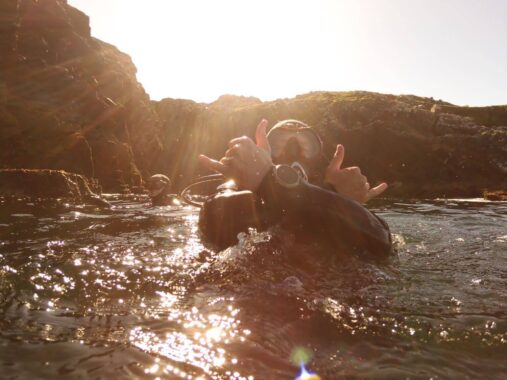
Support the Squad!
We are part of the Amazon Services LLC Associate Program. If you make a purchase on amazon after clicking a link on Diving Squad, we earn a small commission fee, at no extra cost to yourself.
We are also part of several other affiliate programs so if you click on a Diving Squad affiliate link that results in you booking a liveaboard, booking accommodation, purchasing insurance or buying a product somewhere else, once more we make a small commission, without it costing you a cent extra. Thanks!
